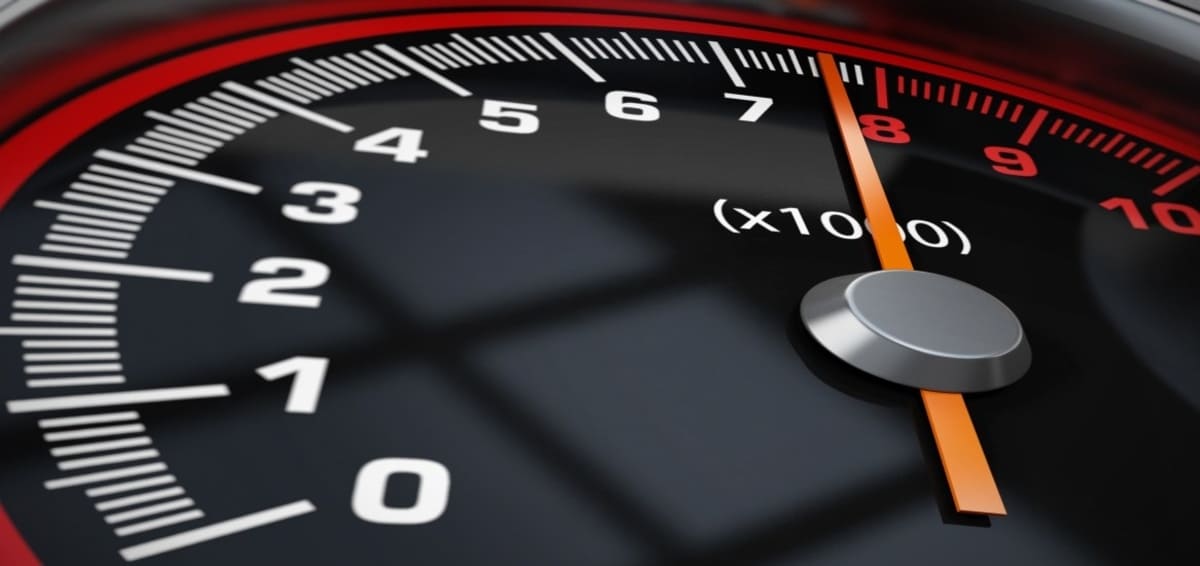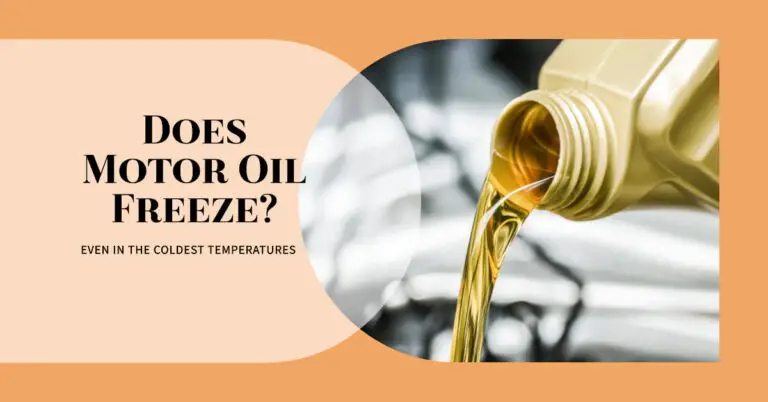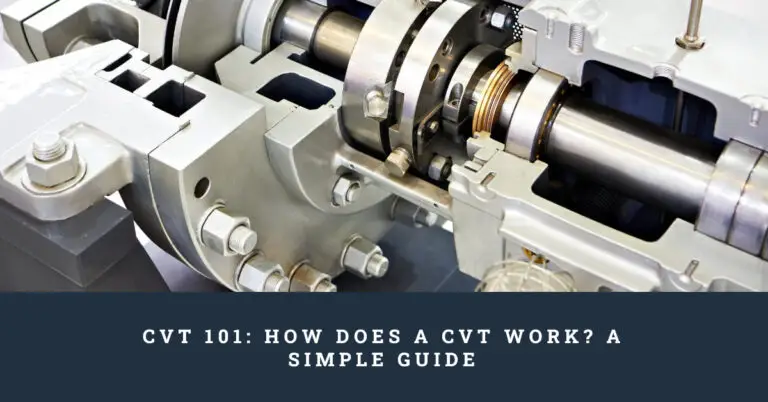RPM Fluctuating While Accelerating? Why This Happens & How to Fix

Has this ever happened to you? You’re cruising down the highway, foot on the gas pedal, when suddenly your engine’s RPMs start bouncing up and down like a yo-yo. That inconsistent, unsteady idle when accelerating is beyond frustrating. Each time the RPMs spike and fall, the acceleration pedal responds erratically, leaving you white-knuckled and wondering:
What’s causing my RPM to fluctuate when I accelerate?
In a nutshell, a jumping or surging RPM when pushing down on the gas is usually due to a problem with your engine getting inconsistent fuel, air, or spark. The electronic throttle control system relies on steady inputs to deliver smooth acceleration. When something disrupts that consistency, it results in a fluctuation in the engine speed.
The specific root causes of RPM fluctuations tend to fall into one of these main categories:
- Faulty engine components causing misfires or hiccups in the combustion process
- Vacuum, air or fuel flow problems resulting in varying levels reaching the engine
- Loose wiring or bad sensor connections providing inaccurate signals
- Transmission issues that affect the engine speed
It’s annoying, and even a bit nerve-wracking, to have your RPMs constantly surging up and down while trying to simply accelerate. But don’t worry – tracking down the source of the problem is possible if you’re methodical. By following some standard diagnostic steps, you can identify what’s causing the RPM fluctuation and smooth out your acceleration once again.
In this post, we’ll explore the 8 most common reasons for an unsteady, fluctuating RPM when accelerating. We’ll also cover how to diagnose and fix the problem, step-by-step. With a bit of logical troubleshooting, you can eliminate that frustrating RPM inconsistency and get back to confident acceleration.
Table of Contents
What Could Cause My Car’s RPM to Fluctuate When I Press the Gas?
A steady RPM while accelerating depends on your engine receiving the right air/fuel mixture and spark at the optimal time. Anything that disrupts that precise balance and timing will show up as surging or jumping RPMs when accelerating.
Based on my experience as an ASE certified mechanic, these are the most widespread culprits behind an engine speed that ebbs and flows unevenly when you step on the gas:
1. Faulty Throttle Body
The throttle body assembly contains the throttle valve which regulates airflow into the engine. It receives inputs from the accelerator pedal and adjusts the throttle position accordingly. A dirty, damaged, or malfunctioning throttle body can fail to precisely match airflow to pedal position, resulting in erratic RPMs.
Over time, carbon deposits inside the throttle body can restrict airflow and prevent the valve from opening smoothly. Low airflow will cause RPMs to drop, while a sudden influx results in spikes. Binding in the throttle linkage or an overdue relearn procedure can also lead to improper throttle adjustments.
Issues with the electronic throttle control system, throttle position sensor, or idle air control valve on the throttle body can disrupt accurate signaling to the engine computer, leading to fluctuating RPMs when accelerating.
2. Vacuum Leak in the Intake Manifold
Vacuum leaks allow unmetered air to enter the intake manifold, throwing off the engine’s airflow and causing RPM fluctuations, especially evident when accelerating.
The intake manifold distributes air drawn through the throttle body to the cylinders. It needs to maintain consistent vacuum in order to accurately measure airflow. Even small leaks from damaged hoses, a faulty PCV valve, leaking gaskets, or loose fittings can allow extra air to bypass the MAF sensor and disrupt vacuum pressure in the intake.
When you step on the gas, these leaks exaggerate the RPM spikes and dips as the engine struggles to adjust fuel trim and timing. Accelerator pump issues or floats in older carbureted vehicles can also introduce extra air and cause surging.
3. Mass Airflow Sensor Contamination
The mass airflow (MAF) sensor is critical for monitoring the volume of air entering the engine and providing intake airflow data to the computer. A dirty MAF sensor disrupts this process and provides inaccurate readings.
Dust, dirt, and oil buildup on the MAF sensor resist airflow across its wires. This leads to underreporting of actual airflow, which can confuse the computer and result in a pulsing RPM when accelerating. Spray cleaners containing oil leave behind residue that contaminates the sensor.
Even small amounts of debris alter the sensitive current sent to the computer by the hot wire inside the MAF. Since the computer relies on MAF readings to determine fuel delivery and spark timing, disrupted signals from a dirty sensor translate to uneven RPMs.
4. Weak Fuel Pump
The fuel pump is responsible for supplying the engine with pressurized fuel from the tank. A worn pump may not maintain consistent pressure as engine demands change when accelerating. This lack of steady fuel pressure results in the rpm fluctuating up and down.
Fuel injectors need a minimum pressure of around 55-60 psi to atomize and deliver fuel into the engine properly. As you accelerate, fuel demands increase. A weak fuel pump may struggle to build pressure during acceleration, starve the engine of sufficient fuel, and cause the RPM to jump around.
Strainers blocking the pickup, low voltage to the pump, bad relay or circuit issues can also affect pump strength. Weak pump pressure only reveals itself when the flow demands are highest, like when you floor the gas pedal. This leads to an unsteady, oscillating RPM.
5. Clogged Fuel Filter
A restricted fuel filter has a similar effect as a weak pump – reduced fuel flow to the engine, especially under load, which presents as fluctuating RPMs when accelerating.
The fuel filter screens out contaminants from the fuel line to keep them from damaging the sensitive injectors. Over time, dirt, rust, and debris can gradually clog up the filter element. Once covered in gunk, the filter chokes flow to the engine.
Pressing the accelerator suddenly increases the engine’s need for fuel. A clogged filter can’t keep up with this rapid increase in fuel demand, creating a lean condition, misfires, and jumps in engine speed as you accelerate. Since the fluctuation smooths out at steady speeds, a clogged fuel filter is the likely culprit.
6. Faulty Spark Plugs
The spark plugs deliver timed sparks to ignite the air/fuel mixture within the cylinders. Worn or fouled spark plugs can cause misfires, noticeable as RPM fluctuations when accelerating.
Over time, the electrodes on spark plugs slowly burn away and may become too wide to generate a crisp spark. Combustion chamber deposits, oil fouling, and carbon buildup on the plug insulator or tip can also prevent complete combustion.
As you accelerate, these conditions are amplified since higher pressures in the cylinder make it even harder to fire properly. The result is occasional misfires and stuttering acceleration. Bad plug wires further contribute to missing sparks and RPM spikes.
7. Loose Wiring Connections
Corroded wiring or loose sensor connectors throughout the engine can cause erratic RPM when accelerating by disrupting communication signals.
Vibration and heat damage wiring insulation over time. This allows conductivity issues like short circuits or high resistance. Critical data from sensors like the MAF, camshaft position sensor, and crankshaft position sensor may get disrupted, confused, or not transferred properly through deteriorated wires.
Intermittent signal problems that aren’t present at idle only emerge when accelerating. The sudden demands reveal any weak connections, inducing the RPM fluctuations as sensor inputs skip.
8. Automatic Transmission Issues
Don’t rule out your transmission as the cause of surging RPMs when accelerating. Transmission problems like worn clutches, leaks, or torque converter problems can all affect the engine speed as they interfere with the connection between engine and wheels.
Transmission fluid constitutes the hydraulic pressure that shifts gears and engages the torque converter. Low fluid levels or leaks reduce this pressure. As engine speed increases when accelerating, problematic gear shifts and lockup in the torque converter from reduced pressure results in engine speed fluctuations.
If the transmission slips and strains against engine torque when accelerating, it will impact RPMs as the computer tries to compensate. Checking trouble codes for the transmission control module may uncover slippage issues inducing the RPM jumps.
Step-by-Step Guide to Diagnosing and Fixing a Fluctuating Idle
Now that you know the most likely reasons an engine’s RPMs would surge and jump around when accelerating, it’s time to diagnose the problem.
Getting to the root cause requires methodically checking each system that can potentially impact idle speed when accelerating:
Step 1 – Scan for Trouble Codes
Connect a scan tool and pull diagnostic trouble codes (DTCs). Codes pointing to crankshaft and camshaft position sensor issues, throttle problems, airflow abnormalities, or oxygen sensor faults will give you a starting point for diagnosing fluctuating RPMs.
Step 2 – Throttle Body Inspection
Check the electronic throttle body by looking for dirt buildup, binding in the linkage, and problems with the throttle position sensor and idle air control valve. Clean out any carbon deposits restricting movement. Ensure no vacuums leaks around the intake manifold gaskets.
Step 3 – Test for Vacuum Leaks
Use a smoke machine or handheld propane torch to test for leaks. Spray around hoses, gaskets, PCV valve, brake booster. Rising RPM when sprayed indicates extra air is entering the engine. Inspect integrity of all rubber hoses.
Step 4 – Check Fuel Pressure
Using a fuel pressure gauge, verify steady pressure around 3,000 RPM. Fluctuating pressure points to a weak pump or restricted filter unable to deliver sufficient fuel under load.
Step 5 – Replace Air Filter and Clean MAF
Dirty air filters should be replaced. Remove MAF sensor and gently clean sensing wire with electronics cleaner or rubbing alcohol to remove oil and debris.
Step 6 – Inspect Spark Plugs
Remove spark plugs and check for worn electrodes, excessive gap, oil fouling, and carbon deposits indicating a bad plug. Replace any corroded plugs and wires as needed.
Step 7 – Check Wire Harnesses
Inspect wiring condition for corrosion, chafing, melted insulation. Make sure connections at sensors are tight and free of debris/moisture.
Step 8 – Scan Transmission
Scan transmission computer for fault codes pointing to issues like low fluid, slipping, or torque converter lockup problems which could impact RPM.
By working through these diagnostic steps, you can get to the bottom of what’s causing those annoying RPM fluctuations when accelerating. With the source identified, you can take the necessary steps to replace the malfunctioning components and enjoy smooth, steady acceleration once again.
Fixing a Surging or Jumping RPM When Accelerating
Armed with the above diagnostic routine, you can zero in on the specific issue disrupting your engine speed when pushing down the accelerator pedal. Here are the steps to resolve some of the most common underlying causes behind a fluctuating RPM:
Throttle Body Problems:
- Clean carbon deposits from the throttle body assembly using throttle body cleaner. Be sure to open the throttle valve fully to expose buildup behind the plate.
- Check for binding and free up the mechanical throttle linkage. Light lubrication can help.
- Test the throttle position sensor voltage at closed and open throttle. Replace if output is erratic.
- Reset the computer idle learn procedure so the throttle can relearn proper positions.
Vacuum Leaks:
- Inspect rubber intake components for damage and cracks. Replace deteriorated vacuum hoses, gaskets, PCV valve as needed.
- Tighten loose hose clamps, fittings, and fasteners allowing air infiltration.
- Seal intake manifold leaks with gasket sealant or replacement gasket. Let sealant cure fully before retesting.
Mass Airflow Sensor:
- Remove the MAF sensor and gently clean the sensing wire using electronics cleaner or rubbing alcohol. No oil-based cleaners.
- Ensure MAF sensor connector is fully plugged in and free of moisture/debris.
- Replace MAF if cleaning does not resolve fluctuating RPM issue. Use OEM manufacturer’s part.
Fuel Pressure Issues:
- Replace clogged fuel filter to restore steady fuel pressure on acceleration.
- Inspect and clean fuel pump inlet strainer if debris present.
- Test fuel pump pressure and volume output. If low, replace pump and/or relay as needed.
- Check fuel pressure regulator diaphragm for leaks indicating failure.
Misfiring Spark Plugs:
- Inspect spark plugs for excessive gap, electrode wear, oil fouling, carbon buildup. Replace as needed.
- Replace worn spark plug wires that may be contributing to misfires.
- Test ignition coils for proper resistance specs. Faulty coils can be intermittent under acceleration loads.
Loose Wire Connections:
- Clean any corroded wire terminals in sensor connectors with electrical contact cleaner.
- Make sure connectors are fully seated. Seal them with dielectric grease to prevent future corrosion.
- Check ground straps and battery cable connections are secure and clean.
Transmission:
- Address any fault codes for solenoids, sensors, clutches related to slipping or lockup.
- Check transmission fluid level and condition. Flush fluid if needed.
- Address leaks causing low fluid and loss of line pressure for smooth shifts.
Bottom Lines
Few problems are more annoying for drivers than pressing the gas pedal only to feel the engine’s RPMs fluttering up and down like a yo-yo. That erratic idle when trying to simply accelerate just leaves you gripping the wheel in frustration.
Hopefully this overview gives you confidence to calmly track down the source of your engine’s jumping RPMs when accelerating. While there are a variety of potential culprits, the problem likely stems from inconsistent air, fuel, or spark getting into the combustion chamber.
By following some standard diagnostic checks, you can uncover if dirty sensors, vacuum leaks, spark plug fouling, or fuel supply issues are the root cause. While solving acceleration problems takes patience, you’ll breathe easier once those fluctuations smooth out and your RPM returns rock steady. Just take it one component at a time until you’re accelerating with peace of mind once again.







